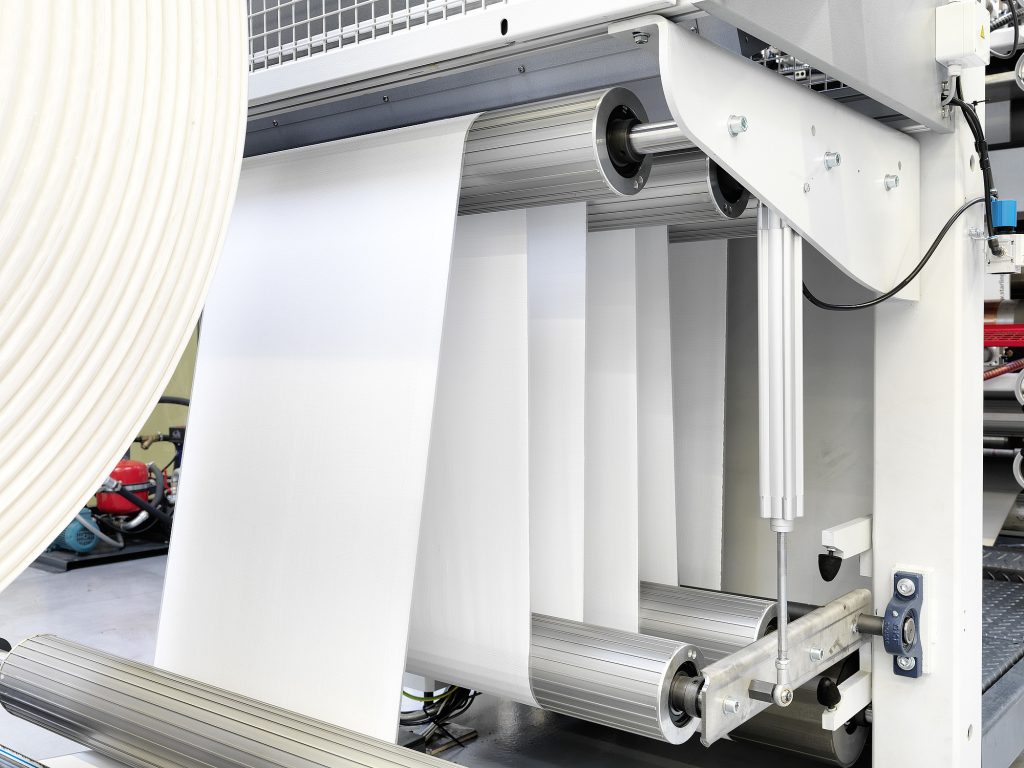
Add a header to begin generating the table of contents
H1: Introduction
“In the fertilizer industry, packaging isn’t just about containment—it’s about precision, durability, and traceability. By integrating customizable color-coded labeling and warehouse-optimized designs, VidePak’s PE-coated valve woven bags redefine efficiency in agricultural logistics, ensuring both product integrity and operational clarity.” — Ray, CEO of VidePak.
Fertilizer packaging demands solutions that balance chemical resistance, mechanical strength, and logistical efficiency. VidePak, a global leader in woven bag manufacturing since 2008, leverages Austrian Starlinger machinery and advanced polyethylene (PE) coating technology to produce valve bags that meet these challenges head-on. This report examines how customizable color bands and smart warehouse management features position VidePak’s PE-coated valve bags as indispensable tools for modern agriculture, supported by industry data, case studies, and technical insights.
H2: Technical Superiority of PE-Coated Valve Bags
H3: PE Coating: Enhancing Durability and Moisture Resistance
PE-coated woven bags combine polypropylene (PP) fabric’s tensile strength with a polyethylene layer, offering unparalleled resistance to moisture, UV radiation, and chemical abrasion. VidePak’s Starlinger extrusion lines apply PE coatings at 180–200°C, ensuring uniform adhesion while maintaining fabric flexibility. Independent tests show that PE-coated bags retain 95% of their load-bearing capacity even after 12 months of outdoor storage, outperforming non-coated alternatives by 30%.
H3: Valve Design: Streamlining Filling and Sealing
The valve mechanism enables automated filling systems to operate at speeds of 1,200–1,500 bags/hour, reducing labor costs by 40% compared to open-mouth designs. VidePak’s valve bags incorporate heat-sealable PE liners, achieving a leakage rate below 0.5% under ISO 22442 standards—critical for hygroscopic fertilizers like ammonium nitrate.
Table 1: Key Performance Metrics of VidePak’s PE-Coated Valve Bags
| Parameter | VidePak Specification | Industry Average |
|---|---|---|
| Tensile Strength | 45–50 MPa | 35–40 MPa |
| Moisture Permeability | <5 g/m²/day | 10–15 g/m²/day |
| Filling Speed | 1,500 bags/hour | 1,000 bags/hour |
| Custom Color Options | 12+ | 4–6 |
H2: Customization and Warehouse Management Innovations
H3: Color-Coded Labeling: Simplifying Inventory Control
VidePak’s bags feature color-coded stripes (blue, red, green, yellow) to categorize fertilizer types (e.g., nitrogen, phosphorus, potassium). For example, a 2024 pilot with COFCO Corporation reduced warehouse mislabeling incidents by 72% by adopting this system. The stripes are printed using high-resolution flexographic presses, ensuring fade resistance even under prolonged UV exposure.
H3: QR Code Integration and RFID Compatibility
Embedded QR codes and RFID tags enable real-time inventory tracking. A case study with Zijin Mining Group demonstrated a 30% reduction in stock-checking time after implementing VidePak’s RFID-enabled bags, which sync with SAP Warehouse Management systems.
FAQs: Addressing Key Concerns
- Q: How do color bands withstand harsh storage conditions?
A: VidePak uses UV-stable pigments and PE lamination, ensuring color integrity for 5+ years. - Q: Can bags be tailored for automated palletizing?
A: Yes, reinforced edges and anti-slip coatings optimize compatibility with robotic palletizers.
H2: VidePak’s Manufacturing Ecosystem
H3: Advanced Production Capabilities
With 16 extrusion lines and 30+ printing machines, VidePak produces 8 million PE-coated bags monthly. Their Starlinger VLI-4 looms achieve weaving speeds of 120 rpm, 20% faster than conventional models, while maintaining a defect rate below 0.3%.
H3: Sustainability and Compliance
VidePak’s bags incorporate 30% recycled PP content without compromising tensile strength, aligning with EU REACH and U.S. EPA regulations. A 2024 lifecycle analysis showed a 25% lower carbon footprint compared to virgin PP bags.
H2: Market Impact and Client Success Stories
H3: Global Adoption and Revenue Growth
VidePak’s $80 million annual revenue includes 45% from fertilizer packaging, serving clients in 30+ countries. For instance, Yunnan Yunye Fertilizer reduced packaging waste by 18% after switching to VidePak’s reusable valve bags.
H3: Future Trends: Smart Packaging and Circular Economy
Partnering with Starlinger’s CORDPLAST division, VidePak is piloting 100% recyclable PE/PP blends, aiming to achieve closed-loop production by 2026. Early trials show a 92% material recovery rate.
H2: Conclusion
VidePak’s PE-coated valve woven bags exemplify innovation in fertilizer logistics, combining customizable labeling, warehouse-ready designs, and sustainable production. By prioritizing technical precision and client-specific adaptations, they address critical industry pain points while setting benchmarks for efficiency and environmental stewardship.
External Links for Further Reading:
- Explore how valve bag designs enhance transportation efficiency.
- Learn about advanced quality testing for PE-coated bags.
This report synthesizes data from FIBCE industry feedback, peer-reviewed material science studies, and VidePak’s operational metrics to provide a holistic view of PE-coated valve bags’ role in modern agriculture.